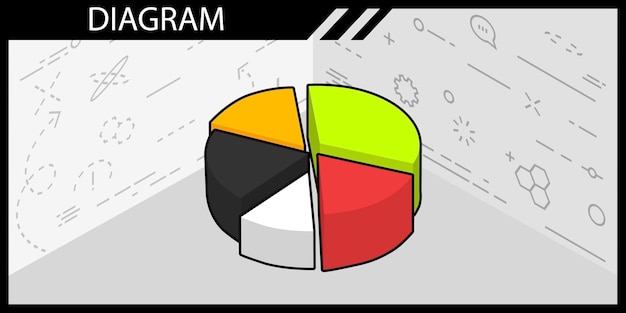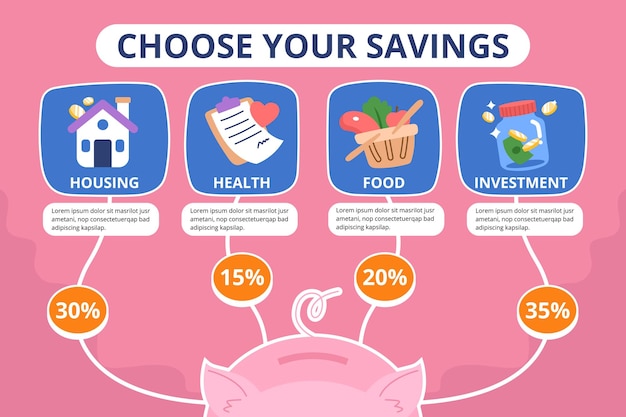Budgeting for Beginners: A Practical Guide to Saving Money

Budgeting for beginners involves creating a simple plan to track income, expenses, and savings, which helps individuals gain control over their finances, identify spending habits, and achieve financial goals.
Embarking on your financial journey can seem overwhelming, but with the right approach, you can take control of your money and secure your future. Budgeting for beginners is a fundamental skill that empowers you to track your expenses, identify saving opportunities, and make informed financial decisions.
Understanding the Basics of Budgeting
Budgeting is more than just restricting your spending; it’s about understanding where your money goes and making conscious choices about it. By creating a budget, you gain clarity over your financial situation, enabling you to prioritize your goals and avoid unnecessary debt.
Why is Budgeting Important?
Knowing why you’re budgeting is just as important as knowing how. Perhaps you want to buy a house, pay off debt, or simply feel more secure about your finances. Whatever the reason, it needs to be strong enough to motivate you when you’re thinking of skipping the gym.
- Gain Control: You will know were your money is going
- Achieve Financial Goals: you will secure your future with financial security so you can buy a house or pay for education.
- Reduce Stress and Anxiety: A financial plan can alleviate stress and anxiety about money.
Different Budgeting Methods
Choosing the right budgeting method can make all the difference. There are several options from which to choose, or you can create your own custom option. Just pick the one that works for you!
Various budgeting methods cater to different lifestyles and preferences. Some popular methods include the 50/30/20 rule, zero-based budgeting, and envelope budgeting. Each one offers a structured approach to managing your finances.
In summary, understanding the basics of budgeting involves recognizing its importance, defining your goals, and exploring the different methods available. By taking these initial steps, you set a solid foundation for effective financial management.

Setting Up Your First Budget
Now that you understand the basics of budgeting, it’s time to set up your first budget. First, you want to gather your financial information and know how much you are making and spending. Then, you want to set financial goals. These can include, paying off debt, buying a car, or even planning for retirement.
Gathering Your Financial Information
Before you can start budgeting, you need a clear picture of your current financial situation. This includes your income, expenses, assets, and liabilities to have a clear base understanding.
Start by collecting all relevant documents, such as bank statements, credit card bills, and pay stubs. This information will help you determine your income and expenses accurately. Don’t worry if there are any inconsistencies in your spending records, as you could utilize budgeting apps to assist you and provide real time information.
Tracking Your Expenses
Tracking your expenses is a daily, non-negotiable activity when you are starting the budgeting process. You should know where every penny you earn is going. You should include every expense no matter how small or how irrelevant you think it will be.
- Use a Budgeting App: Apps like Mint, YNAB (You Need A Budget), and Personal Capital automate expense tracking.
- Spreadsheet: Create a detailed spreadsheet to log your income and expenses.
- Manual Tracking: Keep a notebook or use a budgeting journal to record every transaction to make sure you have everything.
In conclusion, setting up your first budget requires careful planning, gathering accurate financial information, and tracking your expenses diligently. With these initial steps, you’ll be well on your way to gaining control of your finances.
Creating Realistic Financial Goals
Without realistic goals, its difficult to stay the course. Budgeting can assist with managing your money towards that ultimate goal.
Setting realistic financial goals is essential for staying motivated and focused on your budget. These goals should be specific, measurable, achievable, relevant, and time-bound (SMART).
Defining Your Short-Term Goals
Short-term goals are typically achieved within a year and can include building an emergency fund, paying off a small debt, or saving for a vacation. All the things we want and need.
- Emergency Fund: Aim to save 3-6 months’ worth of living expenses.
- Debt Repayment: Focus on paying off smaller debts to gain momentum.
- Saving for a Vacation: Set a specific savings target and timeline.
Planning Your Long-Term Goals
Long-term goals typically take several years to achieve and may include buying a house, funding your retirement, or paying for education. Stay diligent and focused, and your budget will help tremendously.
Creating realistic financial goals involves defining both short-term and long-term objectives, breaking them down into manageable steps, tracking your progress, and making necessary adjustments along the way. With clear goals and a solid plan, you can achieve financial success.
Strategies for Saving Money
Saving money isn’t just about cutting costs; it’s about making smart choices and finding creative ways to increase your savings rate. Implement strategies that align with your lifestyle and budget to maximize your savings potential.
Cutting Unnecessary Expenses
Reducing unnecessary expenses is key to freeing up more money for savings. Every expense counts regardless of how small or big, you need to account for all of them on your budget.
Identify areas where you can cut back, such as dining out, entertainment, or subscription services. Consider alternatives like cooking at home, finding free activities, or canceling unused subscriptions. A little can go a long way and can add up in savings.
Automating Your Savings
Automating your savings makes it easier to save consistently without having to think about it. Set up automatic transfers from your checking account to your savings account on a regular basis.

By automating your savings, you can ensure that you’re consistently putting money aside for your goals without having to manually transfer funds each month. This simple step can significantly boost your savings over time.
Saving money involves cutting unnecessary expenses, automating your savings, and seeking opportunities to increase your income. By implementing these strategies, you can accelerate your progress towards your financial goals.
Dealing with Debt While Budgeting
Budgeting and debt are often intertwined, especially if debt repayments take up a significant portion of the monthly budget. Prioritizing debt repayments and understanding different debt management strategies are essential for freeing up funds and achieving financial stability.
Prioritizing Debt Repayments
Determine which debts to tackle first to minimize interest payments and accelerate debt payoff. Common strategies include the debt snowball method, where you pay off the smallest debts first, or the debt avalanche method, where you focus on debts with the highest interest rates.
- Debt Snowball Method: List debts from smallest to largest balance, regardless of interest rate. Start paying all you can on the smallest debt while paying the minimum on the rest.
- Debt Avalanche Method: List debts from highest to lowest interest rate. Make minimum payments on all of your debts, then put any extra money toward the debt with the highest interest rate.
- Balance Transfer: Transfer high-interest debt to a credit card with a lower interest rate.
Avoiding New Debt
One of the best ways to manage debt while budgeting is to avoid accumulating new debt. This means being mindful of your spending habits and making conscious choices to avoid unnecessary purchases or taking on new loans.
Dealing with debt while budgeting involves prioritizing debt repayments, avoiding new debt, and seeking professional help if needed. By tackling debt head-on, you can free up funds and achieve financial security as soon as possible.
Adjusting Your Budget Over Time
A budget isn’t a static document; it should be reviewed and adjusted periodically to reflect changes in your income, expenses, and financial goals. Regularly fine-tuning your budget ensures that it remains relevant and effective.
Reviewing Your Budget Regularly
Schedule regular check-ins, such as monthly or quarterly, to review your budget and assess your progress towards your goals. This allows you to identify any areas where you may be overspending or falling short of your savings targets.
- Monthly Review: Assess your spending and savings patterns.
- Quarterly Review: Evaluate your progress towards financial goals.
- Annual Review: Make significant adjustments based on long-term changes.
Adapting to Changing Circumstances
Life is full of surprises, and your budget should be flexible enough to accommodate unexpected events such as job loss, medical expenses, or sudden income changes. Be prepared to make adjustments as needed to stay on track.
Adjusting your budget over time involves reviewing it regularly, adapting to changing circumstances, and seeking professional advice when needed. By staying flexible and proactive, you can ensure that your budget remains an effective tool for managing your finances.
| Key Point | Brief Description |
|---|---|
| 💰 Track Expenses | Monitor where your money is going using apps or spreadsheets. |
| 🎯 Set Goals | Define specific, measurable, achievable, relevant, and time-bound goals. |
| ✂️ Cut Expenses | Identify and reduce unnecessary spending to free up more funds. |
| ⏱️ Review Regularly | Adjust your budget monthly to stay aligned with your financial situation. |
Frequently Asked Questions
▼
The first step is to assess your current financial situation by tracking your income and expenses for a month to understand where your money is going.
▼
You should review your budget at least once a month to ensure it aligns with your current financial goals and to make any necessary adjustments.
▼
Common methods include the 50/30/20 rule, zero-based budgeting, and envelope budgeting, each offering a unique approach to financial management.
▼
Identify areas where you overspend, such as dining out or subscriptions, and find alternatives like cooking at home or canceling unused services.
▼
If you encounter unexpected expenses, adjust your budget by cutting back on non-essential spending or using your emergency fund to cover the costs.
Conclusion
Budgeting is a key element in managing income and expenses and is an ongoing journey of financial awareness and discipline. By understanding the basics, setting clear goals, implementing effective strategies, managing debt prudently, and regularly adjusting your budget, you can take control of your finances and achieve long-term financial success.





